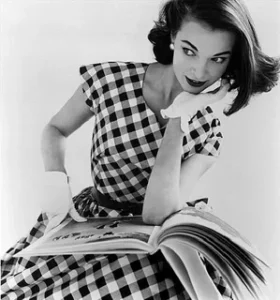
French Fashion Monogram Since 1962: A Legacy of Style and Elegance
French fashion has long set global trends, and the monogram—a defining emblem—has held a special place in the fashion industry, symbolizing sophistication, heritage, and exclusivity. Since 1962, French fashion monograms have become iconic, particularly among luxury brands, marking an era of timeless elegance. This article delves into the significance of the French fashion monogram, its evolution over decades, and the luxury brands that have made these symbols an indispensable part of haute couture.
What Makes French Fashion Monograms Iconic?
Monograms are not merely logos; they are the visual signatures of a brand, representing identity, values, and a commitment to excellence. French fashion monograms encapsulate the essence of luxury through minimalistic design and historical resonance. Their intricate details and refined presentation make these symbols of exclusivity and sophistication that resonate across generations.
French monograms stand out due to their elegant designs, which are simple yet profound. They embody a heritage deeply rooted in French culture and the high standards of the fashion industry. Many fashion houses have preserved the integrity of their monograms, adapting them over time without compromising the core essence of their brand.

A Brief History of French Fashion Monograms
The concept of monograms dates back centuries, but French fashion brands in the 1960s brought it into modern-day luxury. By 1962, major fashion houses began incorporating their monograms into their designs, reflecting the sophistication and artistry of French craftsmanship. From handbags and scarves to clothing and accessories, these symbols have become synonymous with quality and taste.
This era marked the golden age of monograms, where French luxury brands like Louis Vuitton, Hermès, and Chanel cemented their place in fashion history. Monograms became a mark of status, representing a commitment to timelessness and class. The durability and recognition of these symbols have only grown, making them enduring icons of the fashion world.
Key French Fashion Monogram Icons Since 1962
Louis Vuitton: The Quintessential Monogram
The Louis Vuitton monogram, introduced in the 19th century, saw a resurgence in the 1960s. Characterized by the interlocking “L” and “V” initials with floral motifs, the Louis Vuitton monogram is a symbol of luxury and prestige. The brand used this monogram extensively on its leather goods, making it a global icon by the 1960s. The monogram’s unique design is still recognizable and highly sought after today.
Chanel: The Timeless Double C
The Chanel Double C monogram is an emblem of elegance and sophistication. Introduced by Coco Chanel herself, the intertwining “CC” logo has represented refined taste since its inception. By the 1960s, Chanel’s monogram gained iconic status, appearing on its classic flap bags and accessories. The Double C remains instantly recognizable and a symbol of French sophistication.

Hermès: The “H” for Heritage
Hermès, a brand known for its exquisite craftsmanship, integrated the “H” monogram in a subtle yet impactful way. While the brand’s H monogram might not be as widely used as others, its presence on belts, scarves, and accessories represents the height of luxury. The Hermès monogram is synonymous with class and exclusivity, staying true to its rich heritage since the 1960s.
Yves Saint Laurent: The YSL Signature
Yves Saint Laurent (YSL) introduced its iconic monogram as a statement of boldness and innovation. The intertwining “Y,” “S,” and “L” letters reflect YSL’s modern approach to fashion. By the 1960s, YSL’s monogram was a symbol of avant-garde French style, capturing the spirit of Parisian chic. This logo continues to be revered as a hallmark of high fashion.
The Evolution of French Fashion Monograms
French fashion monograms have evolved in their design and application, reflecting both changing consumer tastes and fashion trends. In the 1960s, monograms were largely reserved for luxury goods, appearing mainly on leather products and high-end accessories. However, as the decades progressed, brands began experimenting with placement, materials, and scales, incorporating monograms into ready-to-wear collections.
In the 1990s, many French brands revitalized their monograms with bold colors and modernized designs to appeal to younger audiences. This period saw collaborations with artists and designers who infused contemporary elements into classic monograms. Today, French monograms strike a balance between heritage and innovation, allowing brands to retain their legacy while appealing to a global, diverse audience.

The Cultural Impact of French Monograms
French fashion monograms carry cultural significance beyond their aesthetic value. These symbols are deeply connected to French artistry, craftsmanship, and national identity. The presence of French monograms on luxury goods conveys exclusivity and refined taste, making them highly desirable across the world.
In addition to their connection to France, these monograms have influenced global fashion culture. The popularity of French fashion monograms has spurred other international brands to create their own iconic symbols, taking inspiration from the classic designs that originated in France. This influence has transformed monograms into a universal language of luxury and taste.
How French Monograms Shape Luxury Fashion Today
The importance of French fashion monograms remains undiminished in the modern fashion landscape. Brands continue to use these symbols as a cornerstone of their identity, evolving them to resonate with current trends while maintaining their timeless appeal. From runway shows to exclusive collections, monograms are strategically used to enhance brand value and appeal to discerning clients.
Monograms have also become more accessible through collaborations with contemporary artists, who bring fresh perspectives to these traditional symbols. Luxury brands are now blending classic monogram designs with avant-garde elements, creating limited-edition pieces that appeal to both traditional and modern fashion enthusiasts.
The Craftsmanship Behind Iconic French Monograms
Behind every French monogram lies a commitment to craftsmanship and quality. The process of creating and applying these symbols to products is meticulous, involving skilled artisans who understand the brand’s heritage. From embossing leather to embroidering fabric, each monogram is a testament to the dedication and skill of French artisans.

Many luxury brands uphold stringent standards in the production of monogrammed goods, ensuring that each item meets the brand’s high-quality requirements. This dedication to craftsmanship is a key reason why French fashion monograms continue to be synonymous with luxury and excellence.
Why French Fashion Monograms Remain Timeless
The timeless appeal of French fashion monograms lies in their versatility and symbolic weight. These monograms are not just branding; they are a celebration of heritage, craftsmanship, and elegance. French monograms evoke a sense of nostalgia while remaining relevant to contemporary fashion.
The fact that monograms from the 1960s are still relevant today speaks to their enduring appeal and adaptability. They represent a bridge between the past and the future, honoring tradition while embracing innovation. In a fast-paced industry, French fashion monograms offer a sense of stability and permanence.
French Monograms: The Future of Luxury Fashion
As we look to the future, French fashion monograms will continue to evolve, adapting to digital platforms and global markets. Brands are experimenting with digital monogram applications, using augmented reality and virtual try-ons to make monograms more accessible and interactive. The future of French monograms lies in their ability to adapt to new technologies while preserving their legacy.
In the digital age, French monograms serve as a bridge between tradition and modernity, appealing to new generations while honoring the past. These timeless symbols of French elegance and luxury will undoubtedly remain at the forefront of high fashion, continuing to captivate and inspire.



